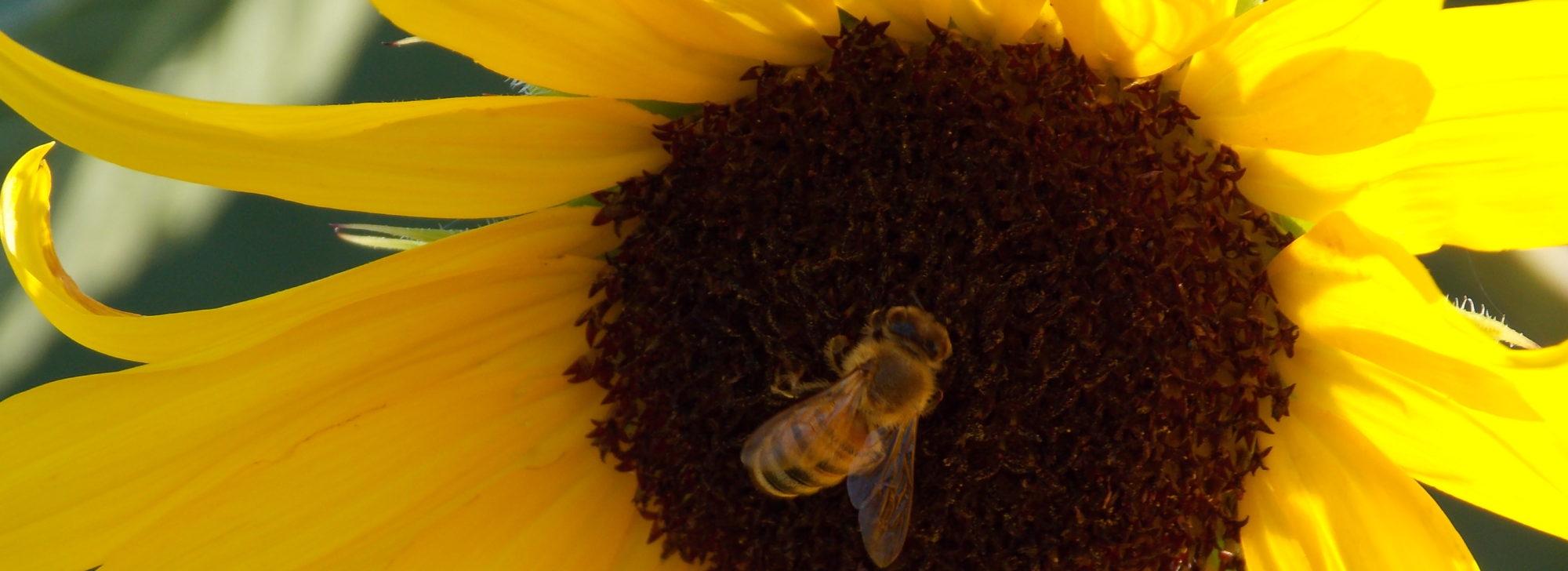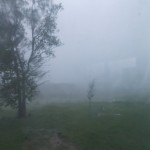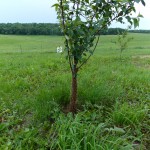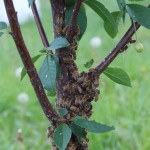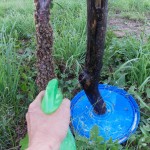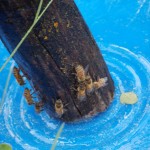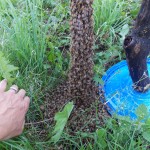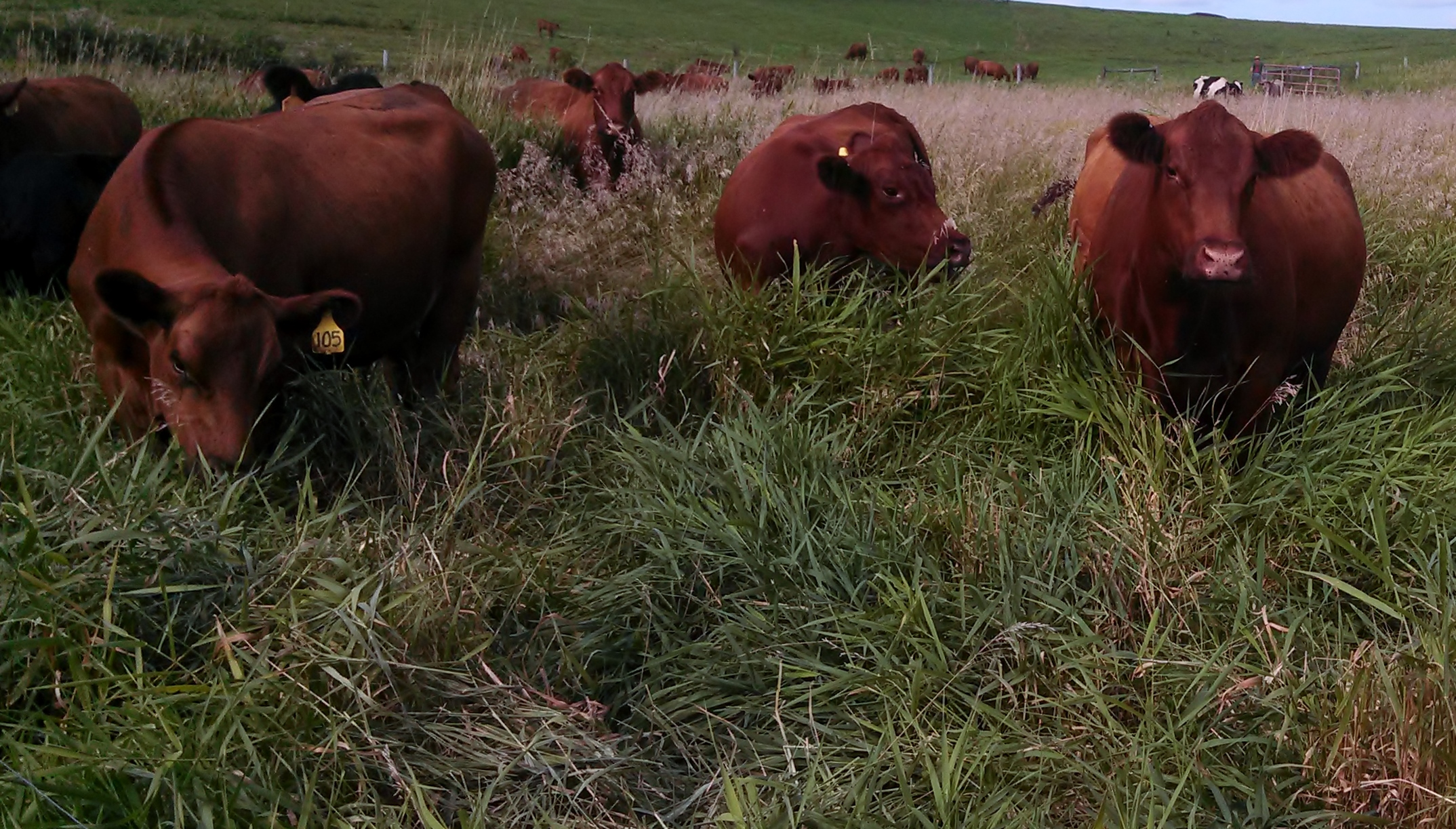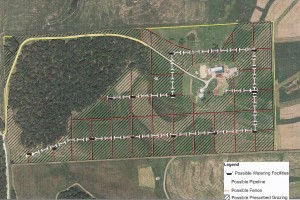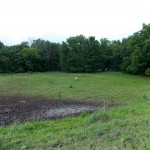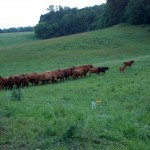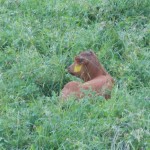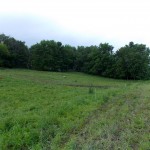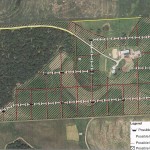In June north east Iowa was deluged in rain. Our area had over fourteen inches in a few days. Keith noticed one of the cherry trees was covered in bees. Last year we planted more cherry and apple trees where the hives are located. One of the smaller trees had a swarm clinging to the trunk. It's possible that the bees started feeling claustrophobic with all the rain or the nectar flow might have come to an abrupt end causing the bees to swarm.
A swarm in May is worth a load of hay, a swarm in June is worth a silver spoon, but a swarm in July ain't worth a fly. - Old New England beekeeper's saying
The method for capturing a swarm is to place a tarp on the ground then hit the object the bees are swarming on. If they're on the branch of a tree you cut it off and shake the bees off over the hive you're relocating them to. In this case the bees were covering the entire trunk of the small tree. There wasn't a branch to cut. The entire tree would have had to be cut down. To hit the tree hard enough to knock the bees loose would have damaged both the bees and the tree. I didn't think either one could have withstood the impact.
Our solution was to cover a fake tree trunk in sugar water to attract the swarm. Once the bees moved onto it we'd place them into the waiting hive. Unfortunately, this wasn't a viable solution. The bees weren't attracted to the sugar water and shaking the tree didn't dislodge enough of the bees anyway. By the time we came up with another solution the swarm flew off. I don't know the reason for their swarming behavior but I failed to recognize the signs and didn't capture them. I waited too long to make a decision. In the end I lost the bees and the birds ate all the cherries anyway. We missed our opportunity. In hindsight I should have hit the tree, dislodged the bees. Sacrificing some to save the swarm. The tree could probably have withstood the blow, if not it could have been replaced.
It's a mistake I won't make again.
